
I actually don’t know where anyone is on the character select screen and completely forget about the weapon select because I use my custom outfits exclusively, all one-hundred of which are selected from the center tile.

Nier Automata’s 2B might just be the worst and most inappropriate guest character in SoulCalibur history. At least Vader, Yoda, and Starkiller from SoulCalibur IV paid lipservice to the concepts of weight and gravity. By contrast, 2B jets all over the arena like something out of a bad anime.
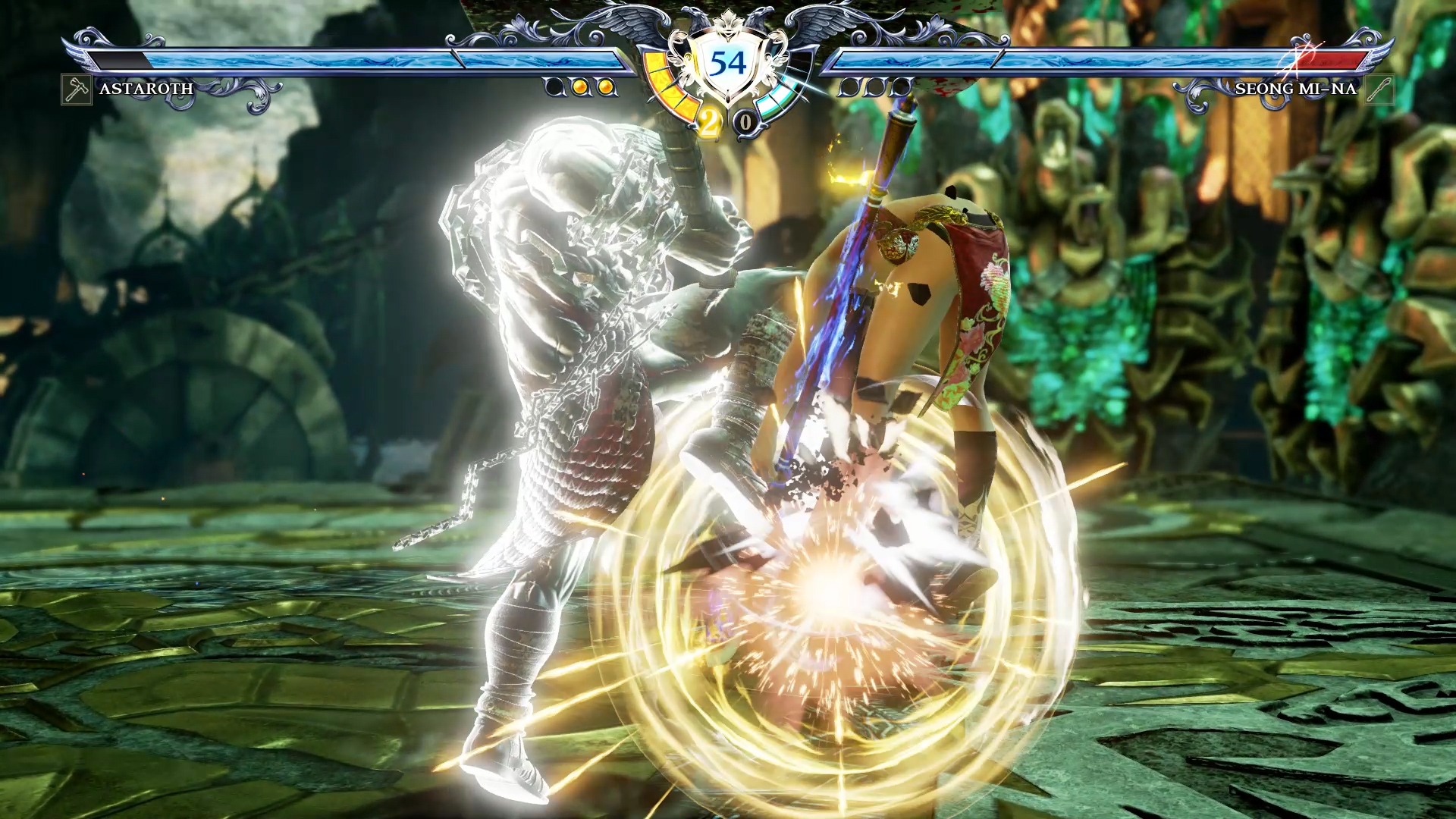
Most Lethal Hits trigger if they counter a specific move and do not get the white flash. Only LHs with an arbitrary prerequisite, usually “perform X moves Y number of times”, will get it and let both you and your opponent know it’s locked and loaded.

The glowing purples spheres around Talim signify the curses Zasalamel has placed on her. The timeless Egyptian can only have a maximum of three curses on his opponent at any given time, and you really need at least two to do anything meaningful.
Review by Jay Wilson I did not think the franchise could come back in the wake of the horrendous SoulCalibur V, opening my review with the unambiguous statement, “SoulCalibur is dead.” However, the sixth sequel to Soul Blade proves me wrong and is easily my favorite since the venerable SoulCalibur II. First, and most importantly, this game chooses not to continue its predecessor’s utterly ruinous story—not that I care about plot in fighting games. However, SoulCalibur V implemented a time skip which meant phasing out many legacy characters in favor of garbage new ones, and I can play a game without a plot—I got through the 80s and 90s just fine without plots—however, I do need a character to play, and an anime-fanfic gang of optimistic teenagers who make Scooby-Doo seem sophisticated? No thanks. Besides, this franchise already has enough annoying, cringe-worth characters. Cassandra? Talim? Both introduced in SoulCalibur II, by the way. Instead, Bandai-Namco chose to chuck all the SCV characters and reboot the franchise, so right out of the gate I have more characters that appeal to me even though I’ve only really honed in on my usual main, Taki. I have dinked around with Astaroth, Ivy, and Zasalamel, and I want to pick up Cervantes, Nightmare, Tira, and Siegfried; however, when I fire up the game, I almost never seem to get around to seriously labbing (practicing) anyone else. But that’s not an indictment on SoulCalibur VI; rather, it’s more a reflection of where I am in my fighting game career. I’m more interested in getting better and solving problems with Taki than exploring new characters, and, indeed, I’m more competitive in SoulCalibur VI than I’ve been in any fighting game before—not good, mind you, just better. And I really like this iteration of the characters. The scythe-wielding, immortal, Zasalamel, whose attacks traditionally focused on hooking the enemy and pulling them in, can now bestow curses, allowing him to freeze time and extend combos or snap his fingers and blast them from across the screen. The giant golem, Astaroth, has typically wielded an arsenal of throws, grabbing enemies out of the air, off the ground, crouching, standing—nowhere is safe—and now he can combo into his grapples and even march towards opponents, powering through hits, to pummel them with his bare hands. Ivy and her mystical sword which has always had the power to break apart, tear through her adversaries, then reform in her hand, can now imprison opponents from mid-range and either pull them in, ring them out, or straight up pummel them. And none of these new powers feel out of place. It’s like the developers took existing undercurrents of the characters and fleshed them out. And while this leads to radically different gameplay, it feels like a natural evolution of past versions. That’s not to say I like all the changes. I really miss Taki’s Demon Fangs from SoulCalibur IV which had an auto-Guard Impact property, allowing me to reflexively punish predictable strings from a neutral position. That move still exists, but now it’s out of the very slow and clunky side-roll which cripples its viability. I also miss the low option out of Taki’s teleport even though skilled players could step both, rendering the mixup moot; I also miss the teleport-feint even though that was equally useless at higher levels. Nitpicks aside, overall I prefer the SCVI incarnations, and Taki is no exception. The spandex-clad ninja has gained a couple new approach tools—a two-part acrobatic attack whose second hit can be delayed and powered up with the Break property. She can also low-kick out of Stalker, her jump; plus, now she can throw a kunai, which isn’t terribly useful, but it looks cool. And I love having Stormy Skies, the attack throw where she flips up onto their shoulders and slits their throat, out of her Possession stance. Not to mention a powered up Assassin’s Purification where she dashes forward and plunges her sword (Mekki-maru) into her opponent, then draws her other sword (Rekki-maru) and slashes with that, finally she rips Mekki-maru out of them only to slash with it one last time. It utterly devastates their lifebar, but more importantly, it looks amazing ... especially with how her body-suit lights up with runes while she does it. 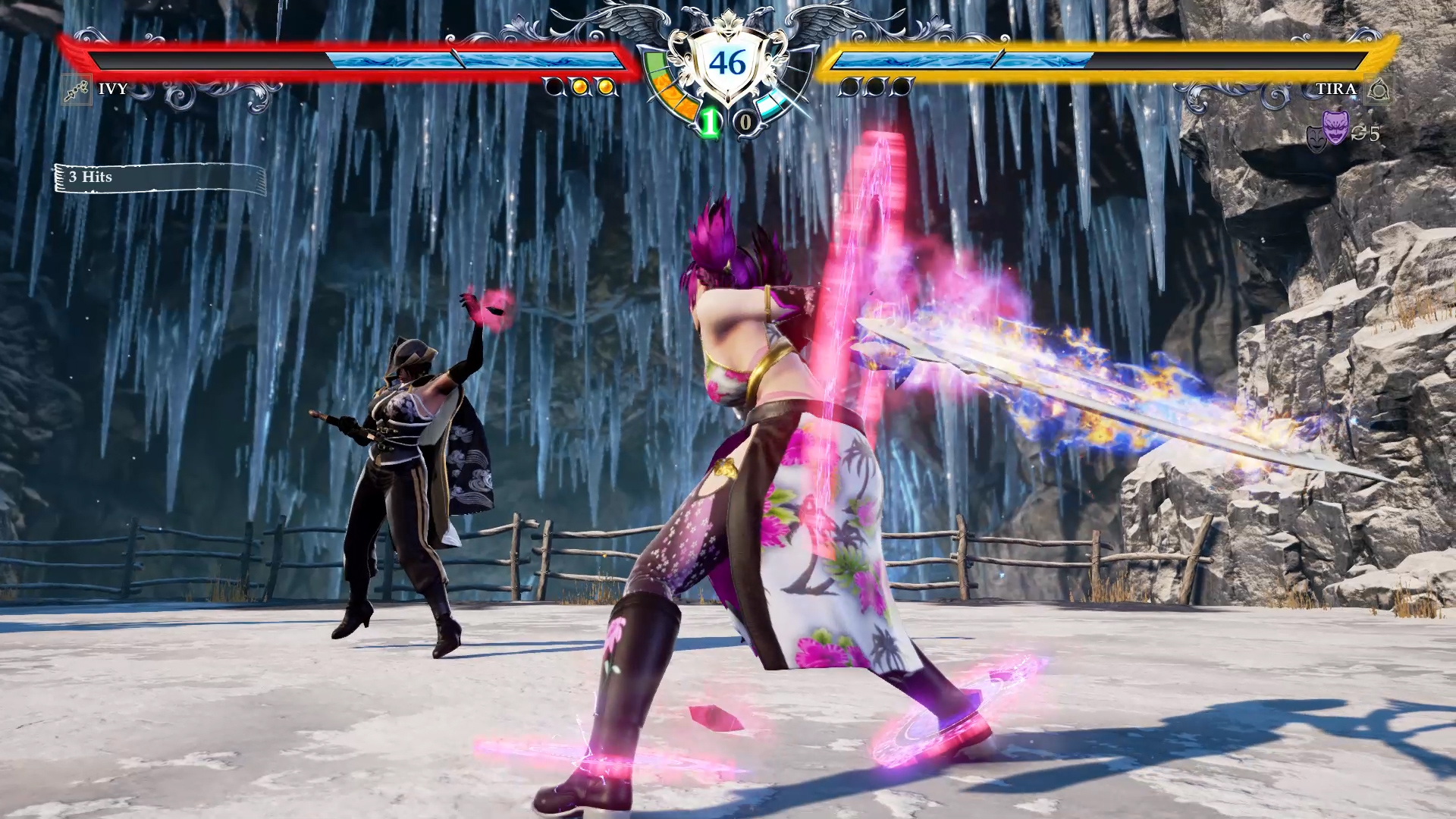
Like SoulCalibur V, the red around Ivy’s lifebar means she’s dangerously close to having her guard broken. The yellow around Tira’s lifebar means she’s on her way.
Many characters now have gimmicks where they collect an arbitrary thing under their life bar that, when fully stocked up, enhances their moves, and I’m not sure how I feel about that. Amy literally throws out roses. Maxi lights up stars in a constellation when he changes stances. And Setsuka pieces together a snowflake, a moon, and a flower when she connects with attacks, counter hits, and post-step hits. My problem is these gimmicks never reset, last for the rest of the match, and don’t seem hard to acquire. Contrast this with Zasalamel’s curses: he has to spend his gimmick to momentarily stop time, and the payoffs really aren’t as potent as that sounds, especially considering the curses go away between rounds. Even Tira who can get Soul Charged benefits without actually being Soul Charged has a limitation: she constantly flip-flops between two completely different movesets. But Amy, Maxi, and Setsuka? Once they have their arbitrary thing, it’s auto-GIs and Break Attacks all day. Keep in mind, I’ve barely touched those characters, so it may not be as free as I make it out to be. I just know fighting against them is annoying when they’re fully stocked up. New characters Grøh and Azwel join the cast with the former using a double-bladed sword that can separate into two weapons for certain moves and the latter summoning swords, spears, axes, and shields out of nothing, similar to Algol from SoulCaliburs 4 and 5. While I don’t like how either play—Grøh is a little too hyperactive, anime for my tastes (especially when he activates soul charge and teleports all over the place), and Azwel’s basic combos have him either spinning around like a merry-go-round with magic swords fanning out or gliding around on an invisible scooter that shoots energy blades (his other moves are fine, but those two—again, basic combos—are very off-putting.) I do, however, appreciate that, aesthetically speaking, both fit better into the SoulCalibur universe than, say, Star Wars characters in SCIV... or the next generation, teenyboppers in SCV. 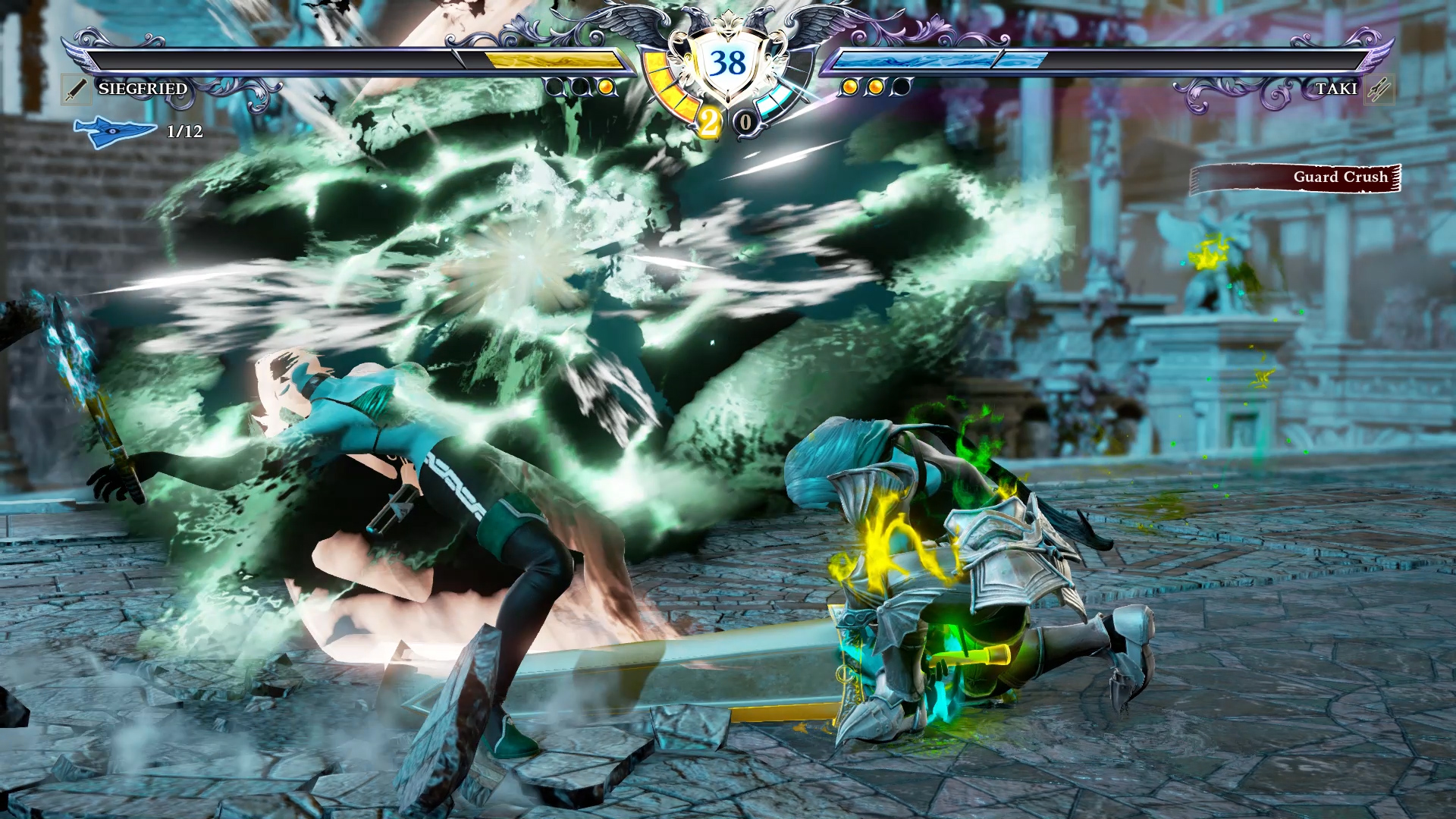
In past games and even this game at launch, armor break would often leave characters in their underwear. Starting with patch 2.20, however, you can now specify by body region—upper, mid, lower—whether or not the outfits visually stay intact.
Interestingly, Namco implemented a number of changes to simplify the game and make it easier for beginners (and also create a tad more consistency across multiple characters.) For example, to enter Taki’s Possession stance, you traditionally had to do a quarter-circle-back (QCB) input. It didn’t matter if you did it raw or transitioned from another move. You were doing QCBs all the time, which was different from other characters because, say, Nightmare or Siegfried only have to hold a button (versus just tapping it). In SCVI, Taki’s raw possession is still performed the old way; however, now if you want to transition into it from another attack, you just have to hold back. The legacy method still works, but now there’s an easy mode that’s closer to Siegfried and Nightmare’s gameplay. Hilariously enough, there are a couple changes that actually hurt newcomers. In the past, characters had two throws: an A throw and a B throw (because the inputs were A+G and B+G). You could break an opponent’s A throw by pressing A (horizontal-slash) during its startup. Likewise B (vertical-slash) broke B throws. The new system is similar except now it’s either hold forward and throw or hold back and throw. Pushing any attack button—even kick—breaks a forward throw. To break a back throw, however, you have to hold back and push any attack button (again, even kick works where in past games it did not.) It’s still a 50/50 mixup if you know what you’re doing. The problem is a button masher might break the old A / B throws with equal consistency because they’re pressing all the buttons like a maniac; however, they don’t know where back is on the d-pad, so while they will escape from every single forward throw every single time, they will never, ever, ever break a back throw in a million years. Not even once. Not even by accident. More refinements include the new Guard Impact (GI) system. They now counter both high and low attacks whereas past games (sans 5) actually had two, requiring a player to correctly guess which one to use. The tradeoff is that GIs in the past also countered Break Attacks (blue lightning). Here Break Attacks punch through GIs, causing a dramatic counter called a Lethal Hit (LH) which can lead into combos not possible otherwise. This simple change injects a fresh new mind game into the old, tried and true mechanic because while GIs in the past carried a risk, that risk is magnified with Lethal Hits on the table. And in Season 2, Bandai-Namco perfected the mechanic with the addition of a meter-burn option (dubbed Resist Impacts, or RI) which can stop Break Attacks and even Unblockables as long as you have the resources. 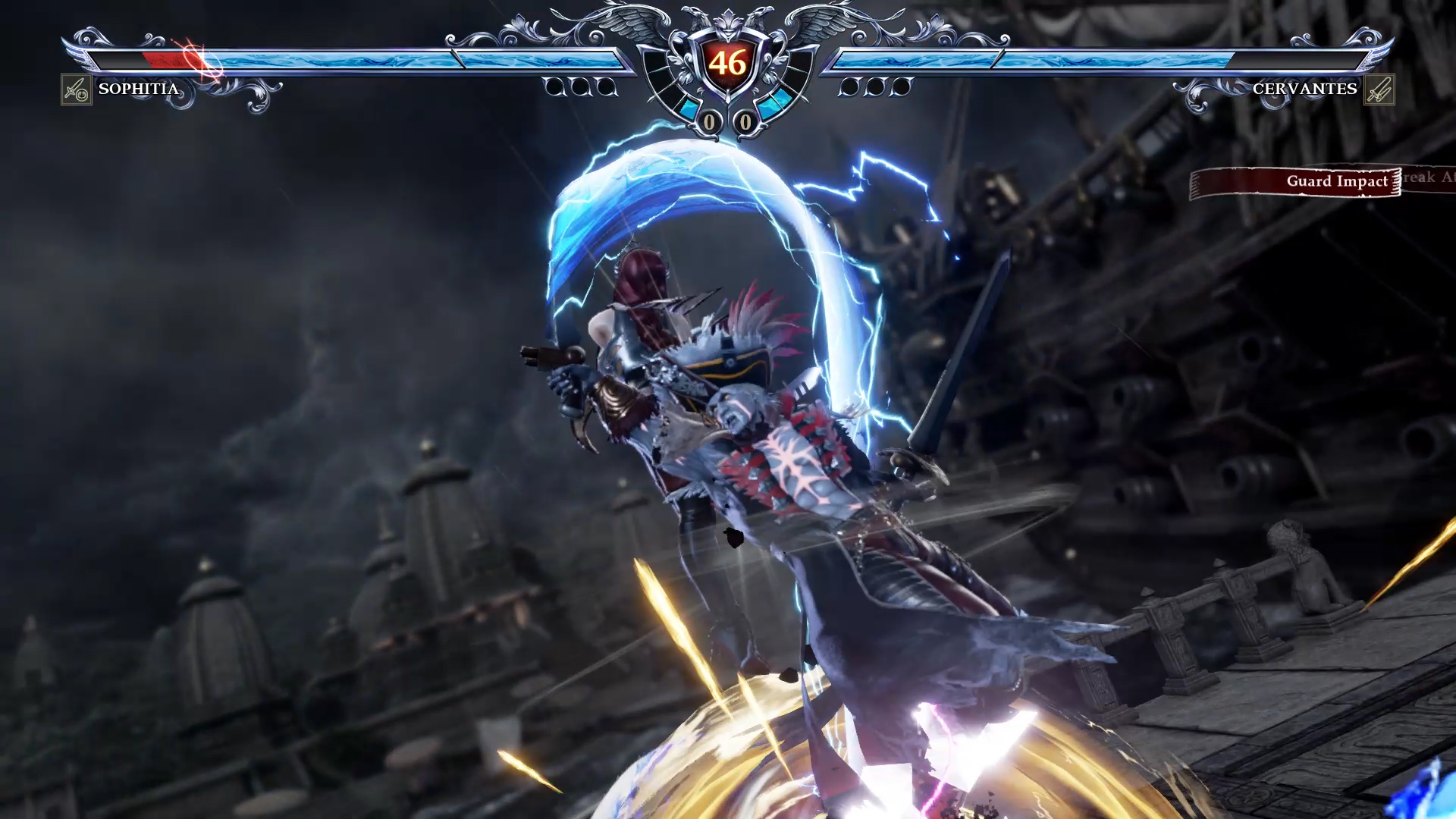
Blue lightning (Break Attacks) will beat both Reversal Edges and Guard Impacts. When that happens, most of them will also result in a Lethal Hit and usually lead to a combo.
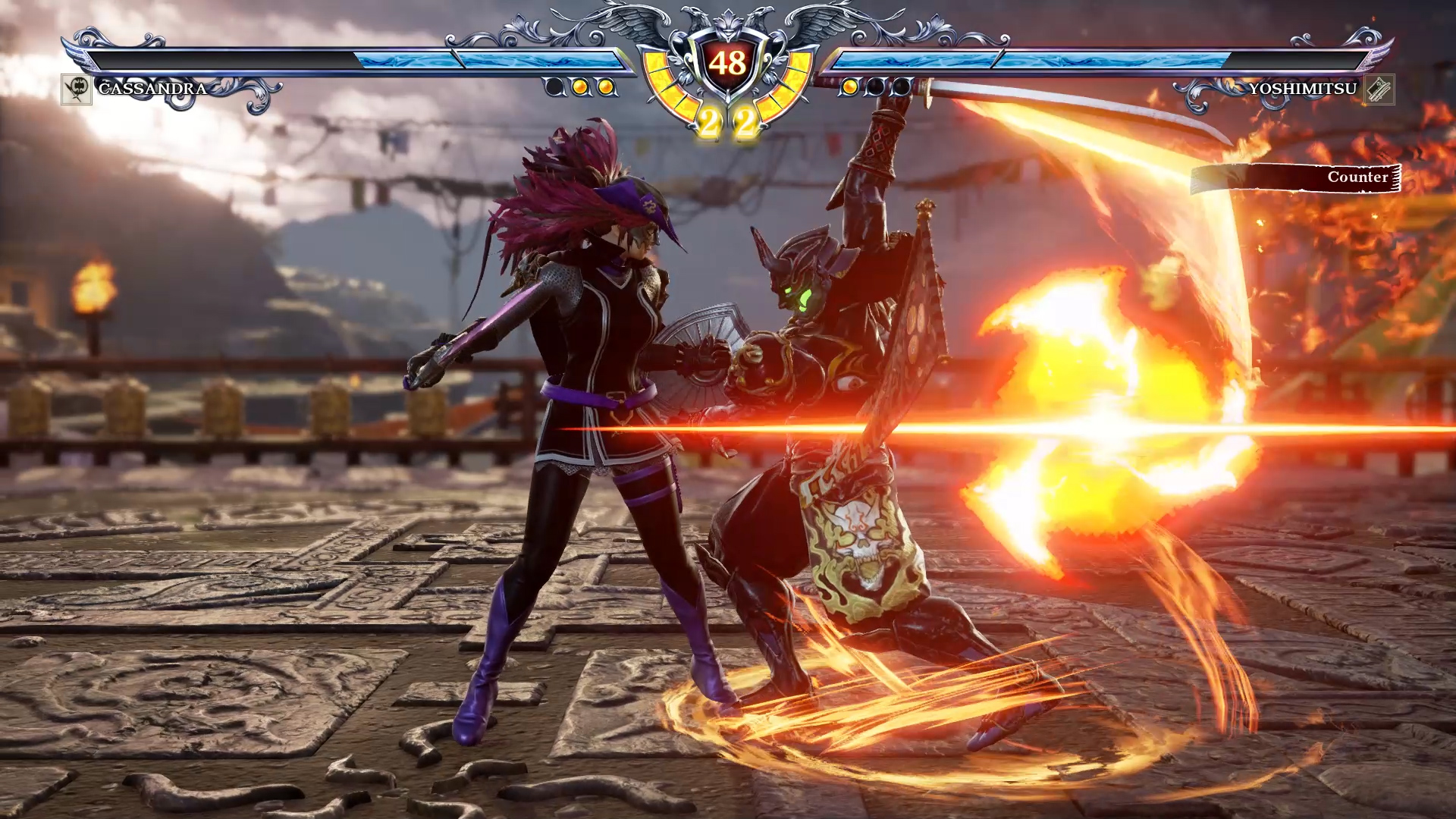
As always, Unblockables have long start up animations while the weapon lights on fire. In casual play, though, it’s not uncommon for people (including myself) to panic and freeze up instead of just pushing a button and hitting them out of it.
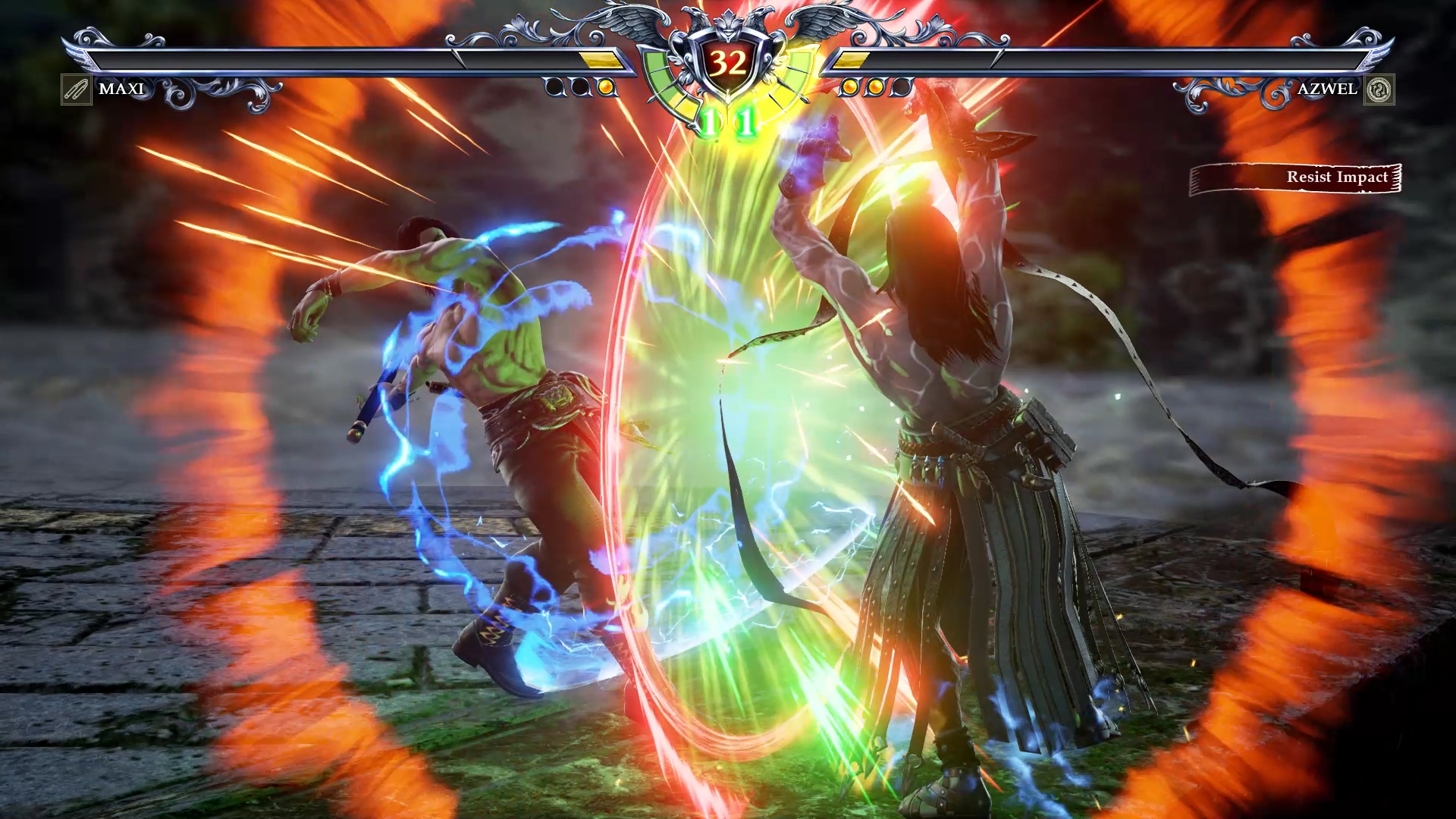
Resist Impacts, which have a larger and flashier spark, will stop both Break Attacks and Unblockables. You can see the blue lightning still disipating from Maxi.
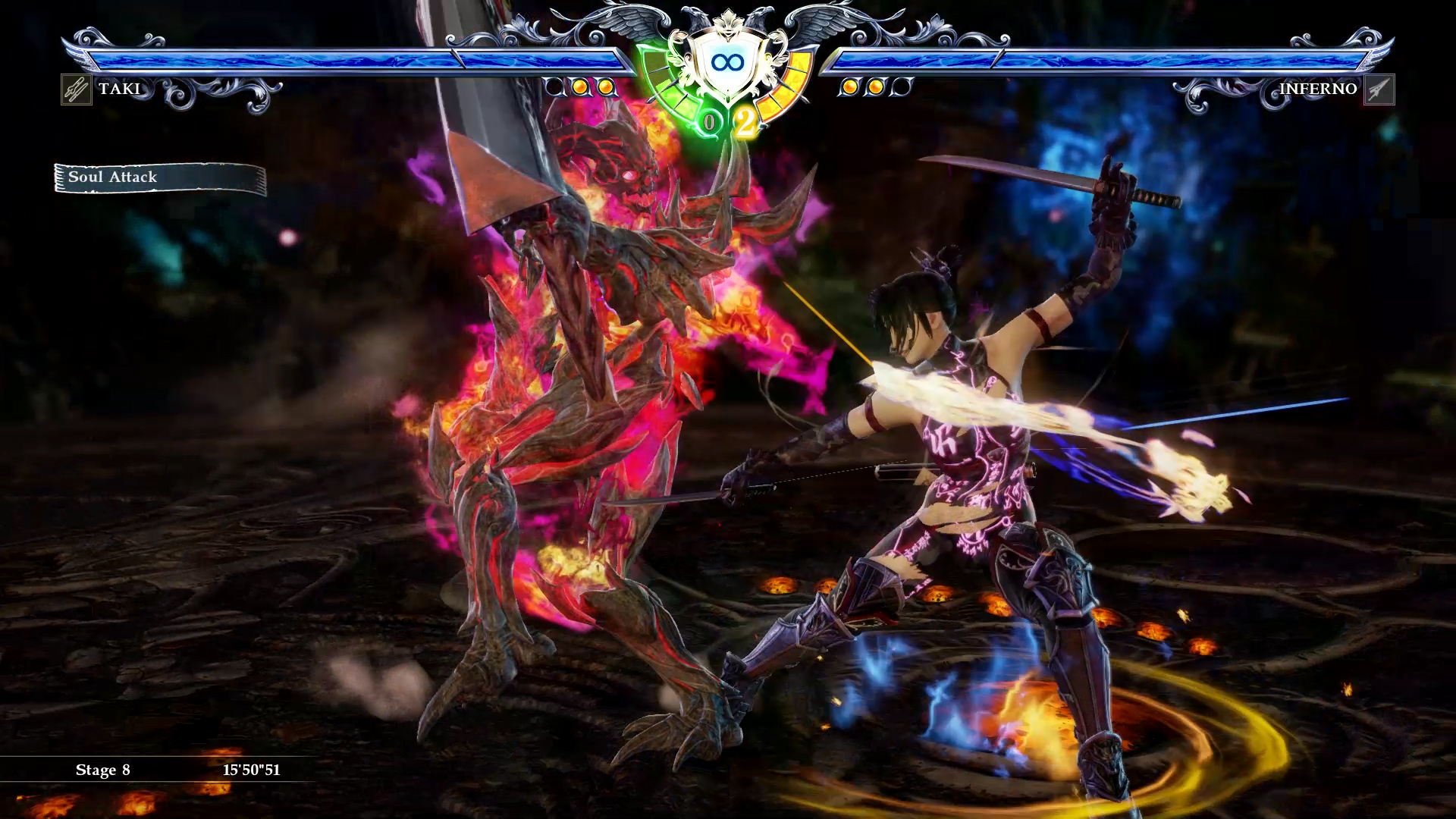
You can enter Soul Charge two ways. The season one method creates a shockwave and knocks enemies back. Season two introduced an alternative that allows you to power up while attacking. Both have their uses. Here Taki activates SC via her Soul Attack.
SoulCalibur VI also introduces a weirdly redundant mechanic called Reversal Edge (RE) which functions as a soft Guard Impact with a counter-attack follow up. If the attack lands, it becomes a flashy game of rock paper scissors. You and your opponent push a button, and if you guess correctly, your attack wins. Vertical slash beats horizontal, kicks beat verticals, and horizontals beat kicks. The problem with Reversal Edge, besides being the training wheel version of Guard Impacts, is beginners tend to use it as a crutch because unlike a GI that is only active for a few frames, you can hold a Reversal Edge and absorb entire combos. Beginners also don’t know to A. sidestep, B. delay attack, or C. use Break Attacks, therefore, an RE-spammer will utterly stomp other beginners, and when I go up against them I’m bored to tears because their entire gameplan is Reversal Edge, then more Reversal Edge, and when that fails, Reversal Edge some more. At least if they’re button mashing, they occasionally change buttons. That and Reversal Edges are 90% cinematics. Speaking of which, Critical Edges (cinematic super moves) return, cost a full stock of meter, and give you time to go get a drink because they put gameplay on hold for about five to ten seconds. Mercifully, that meter can instead be used to activate Soul Charge (SC) which temporarily unlocks new moves, new combo routes, and bestows break or even unblockable properties on normal moves. If your opponent doesn’t know how to defend, you can realistically kill someone at full health in the same amount of time it takes the CE cutscene to play out. I know. I’ve done it. I’ve also been on the receiving end of it. It kinda sucks when it happens, but SC only lasts a few short seconds, and that leads to a mind game. You see, when Soul Charged, the natural inclination is to rush in and maximize damage because the clock is ticking; however, that makes you incredibly predictable which, in turn, makes Soul Charge just as dangerous to yourself as it is to your opponent if you’re not careful, and that makes it fun. Lastly, SoulCalibur VI carries over the one thing SoulCalibur V did right: Guard Breaks. Defend too much and your lifebar will start flashing yellow, then red, and then your guard will break, allowing your opponent to get a free combo. Furthermore, too many GIs and REs can also lead to your guard breaking, which encourages judicious use of your defensive options. But even if your lifebar is flashing red, there’s still a mind game because certain attacks are much more likely to break your guard, meaning people once again become predictable in their quest to exploit their advantage. If you know what attacks are coming, you can avoid them and punish. And consider also that your guard breaking is not the end of the world because your opponent has to follow up, and sometimes they’ve committed to a combo that doesn’t let them capitalize on it. For example, Taki can uppercut into an air throw. The uppercut can guard break, but I have to commit to jumping before I know whether or not the uppercut connects. Too many times I’ve broken their guard only to jump over their head because I either guessed wrong or I wasn’t paying enough attention (or my reactions just suck.) In close, I typically spend the bulk of my time playing other people. I frequent Character Creator to customize my characters’ (Taki’s) outfits, I go to Training mode to experiment and practice more complicated moves/combos, I run through Arcade mode to dedicate those moves/combos to muscle memory, and then I go online where I stay for the bulk of my sessions. While there is a Story mode for both canonical and created characters, I really haven’t been able to bring myself to play either since launch. I never feel like sitting through the asinine talking portraits of Story mode for the newer DLC characters (or revisiting the asinine talking portraits of the base game’s cast.) And I really, really can’t immerse myself in Libra of Souls (generic story mode for custom characters) even though there’s still a lot of side quests left to do. 
When you’re down to your last round (ie, if you lose two in a standard best of five), the game gives you a full stock of meter. Don’t get too excited, though, because your opponent is also entitled to a free stock should they come down to their last round.
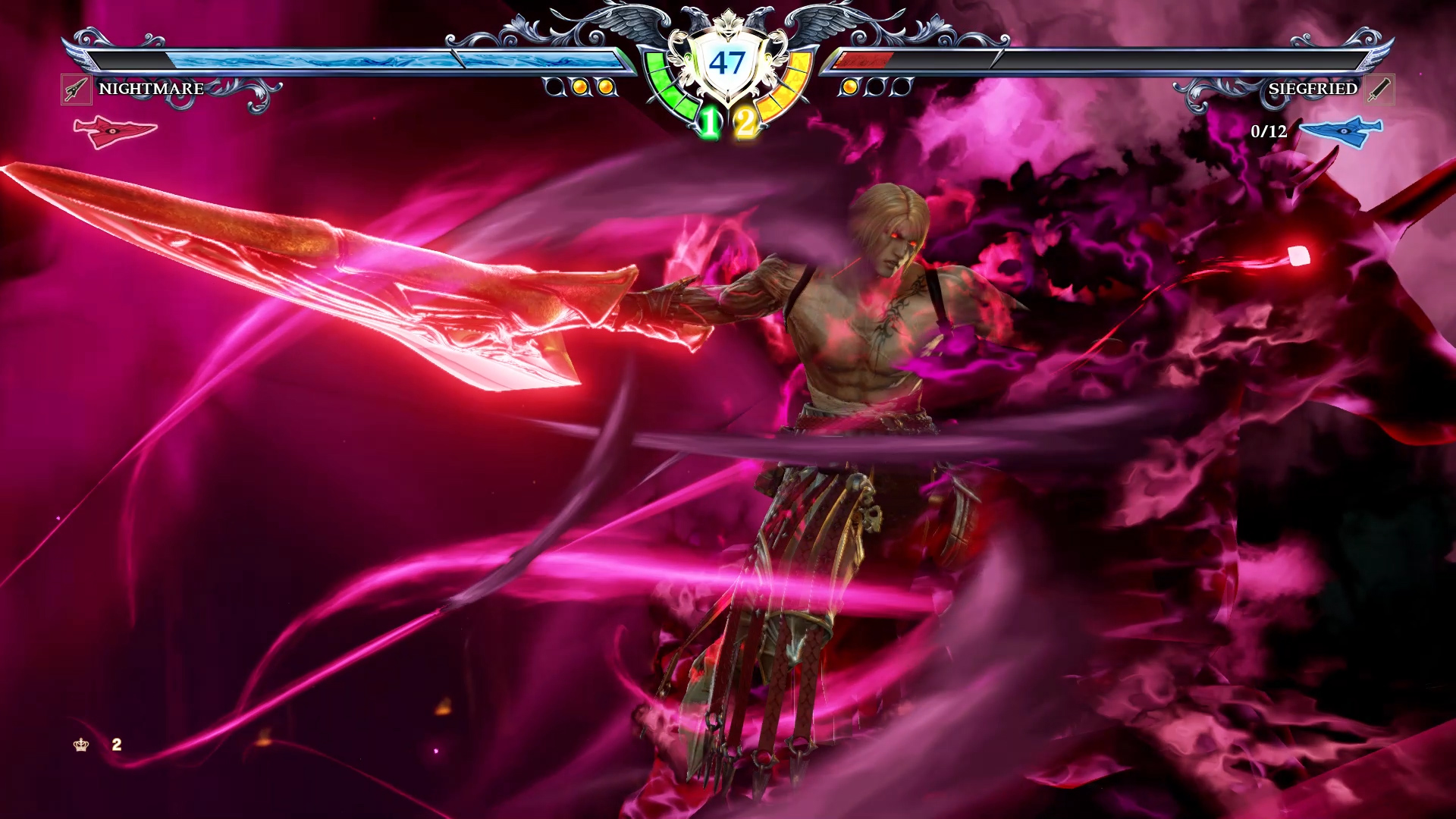
You can get two stocks of meter. Each stock is subdivided into quarters. A Critical Edge or Soul Charge costs one full stock. Resist impacts costs half a meter. And some characters can burn quarter-stocks on individual moves.
It sounds weird, but I can put myself into the shoes of say, Cervantes, a possessed pirate hell-bent determined to reclaim Soul Edge who has established relationships with other characters. When he goes up against Sophitia who defeated him in Soul Blade, for example, I can imagine his fury and role play (so to speak) by using the most vicious, damaging, painful moves and then hitting her while she’s on the ground. Kilik going up against his friend, Xianghua? I use only what I need to to win and then maybe do a little flourish or even a taunt after the match. I don’t need dialog. I don’t need Story mode. I can do this in Arcade mode. But Libra of Souls? That’s a blank template with template dialog and template choices. Pick Mitsurugi’s fighting style, and go play Mitsurugi without Mitsurugi, and then switch over to Siegfried while wearing the same generic skin. I don’t care about exploring the map, I don’t care about levelling up or mastering all the weapon styles, and I don’t care about buying equipment, managing mercenaries, or whatever else you can do in that mode. I really didn’t even bother making a custom character. I just accepted the defaults to get it over with and went through the main quest just to say I did it. That’s not a complaint, though. I don’t care that Story Mode and Libra of Souls exist. It doesn’t interest me, so I just don’t play them. As long as I have modes and characters that interest me, I’m happy. | ||||||||||||||||||||
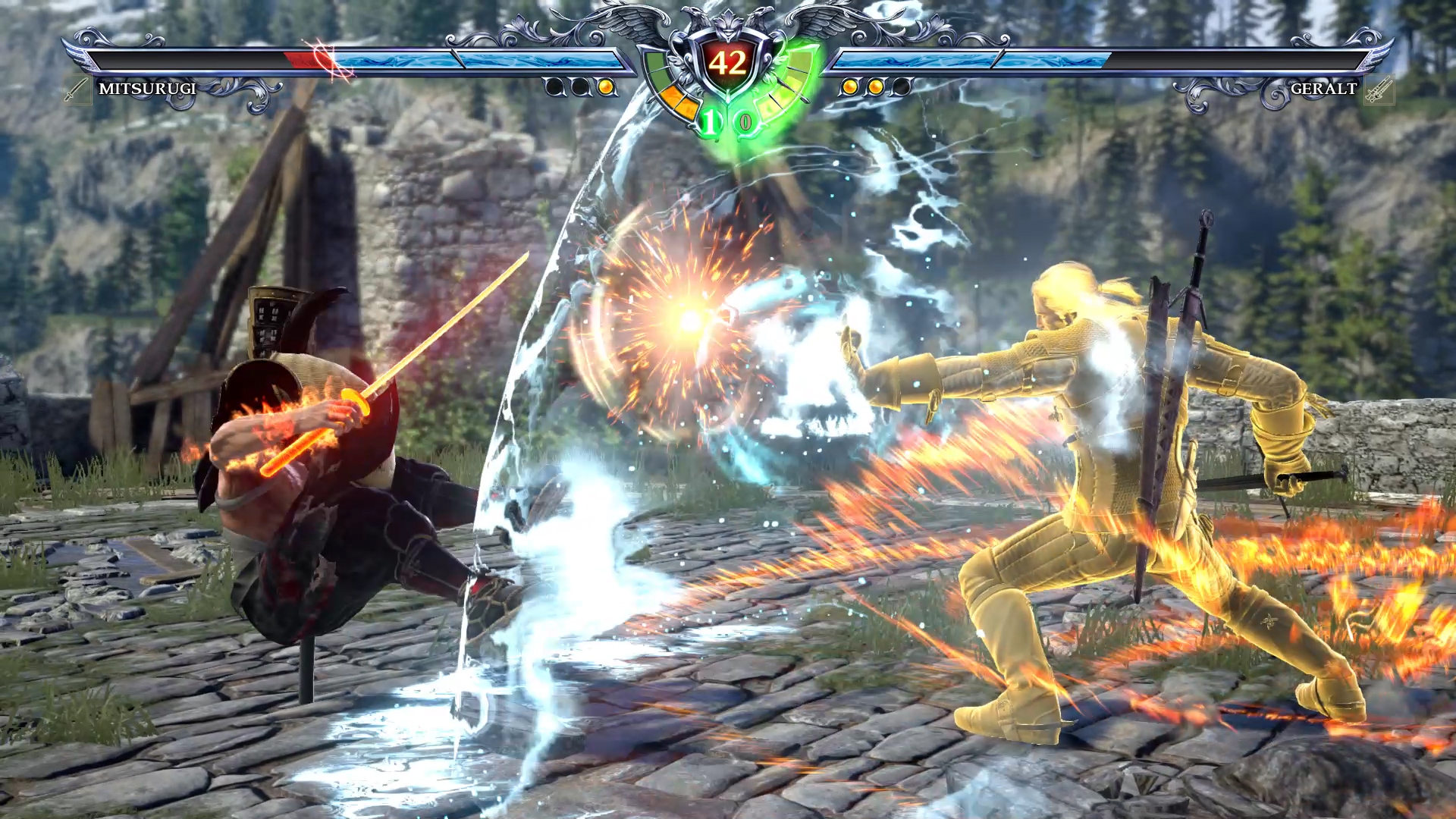


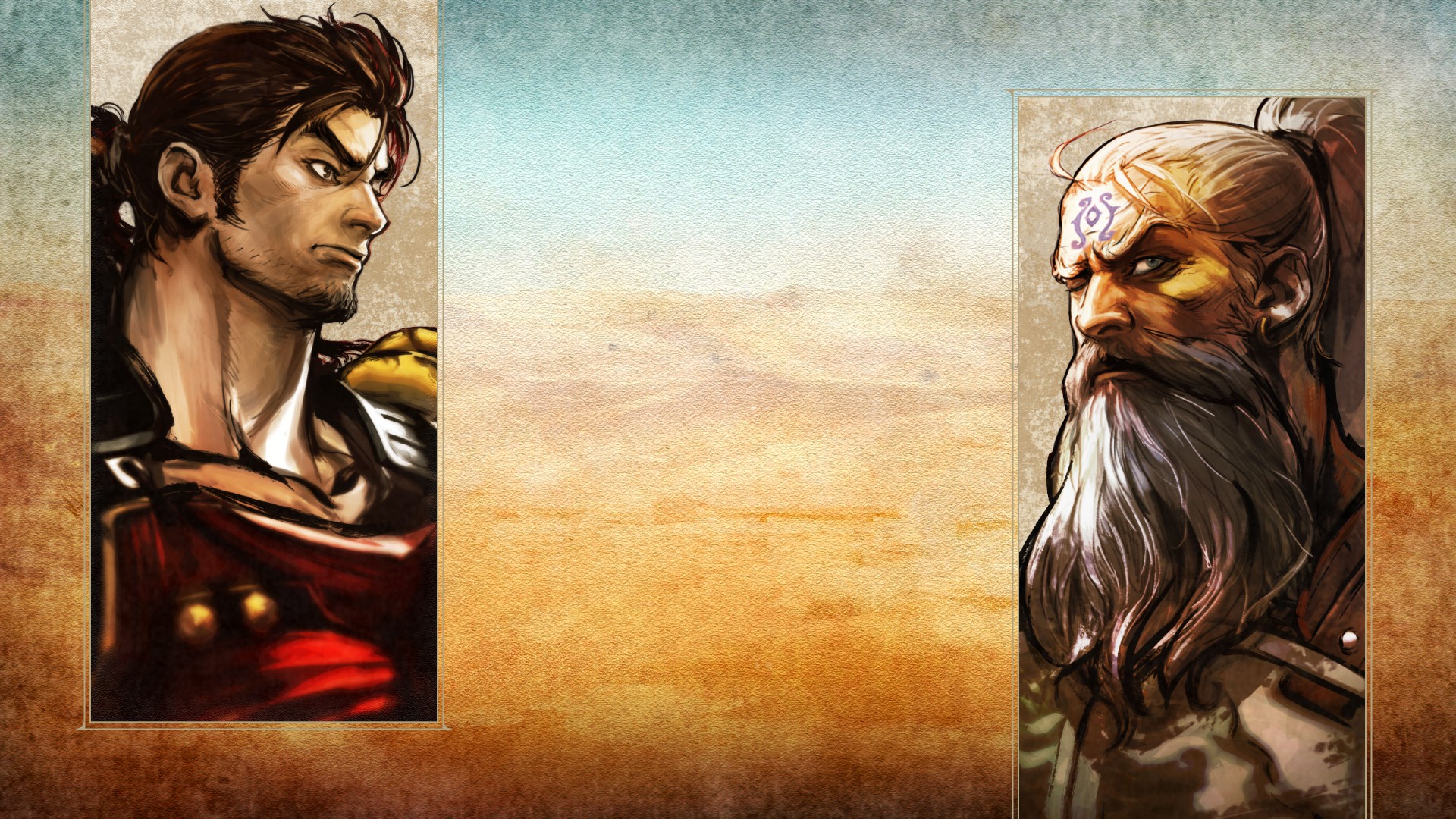
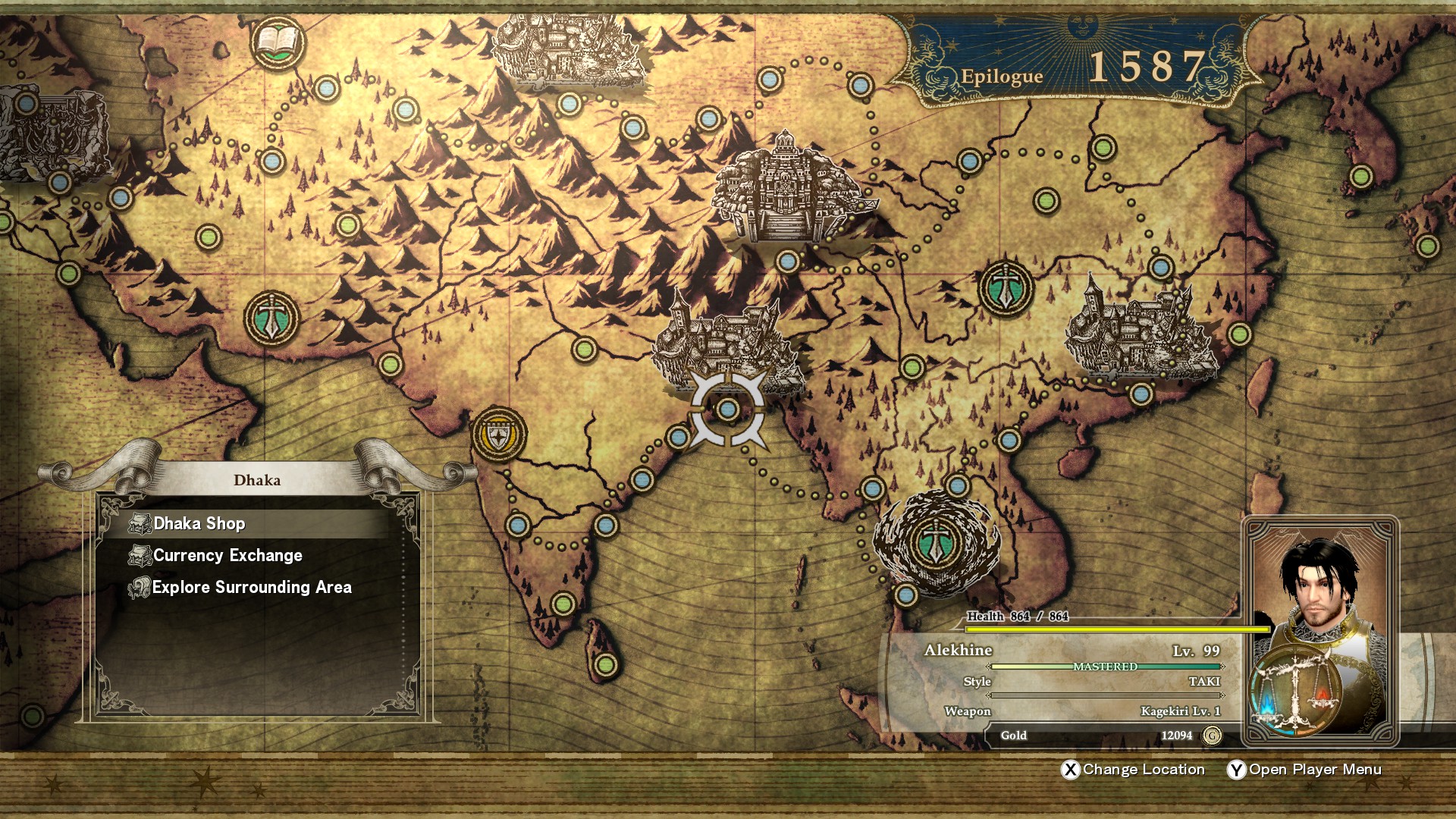 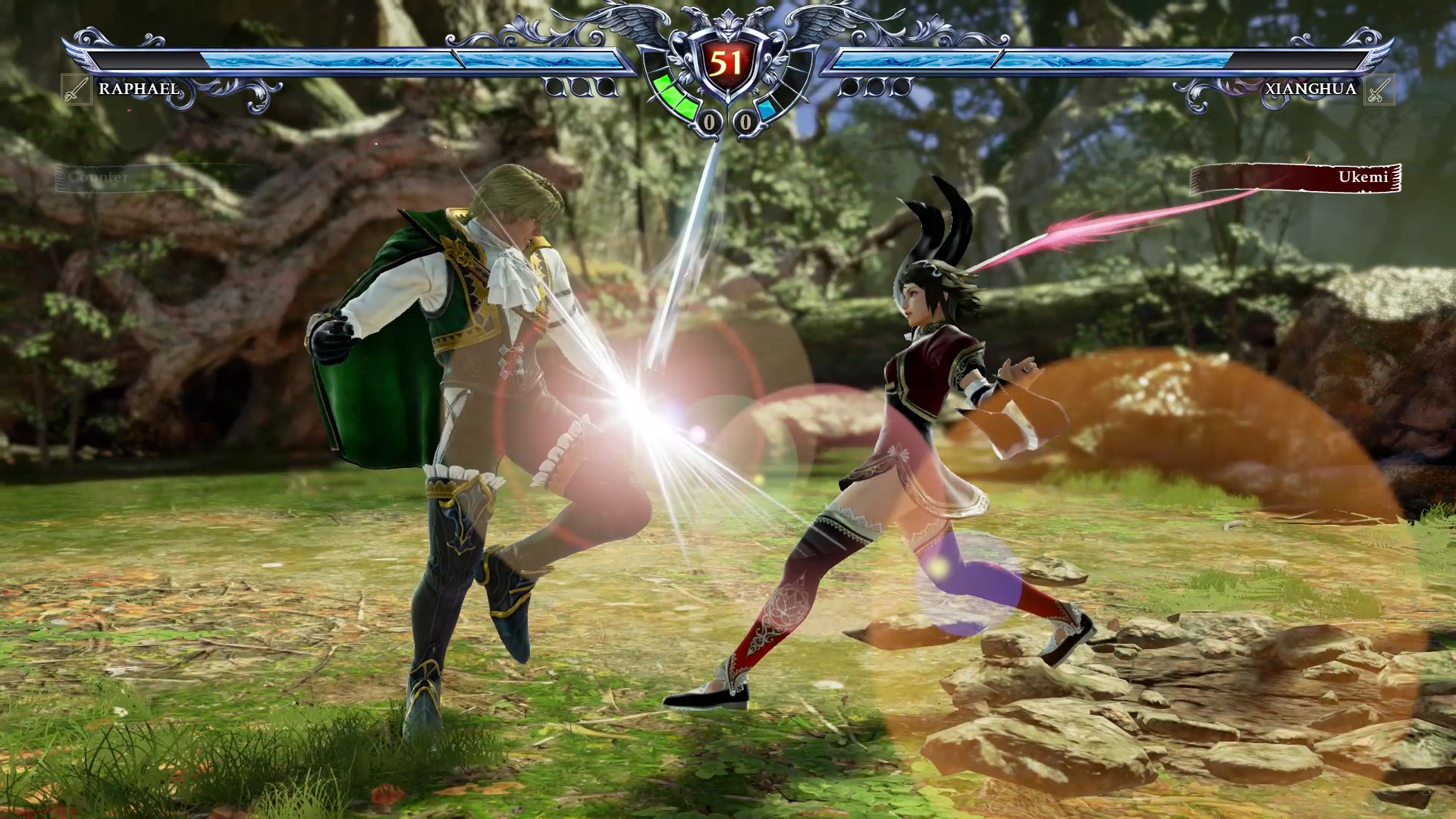

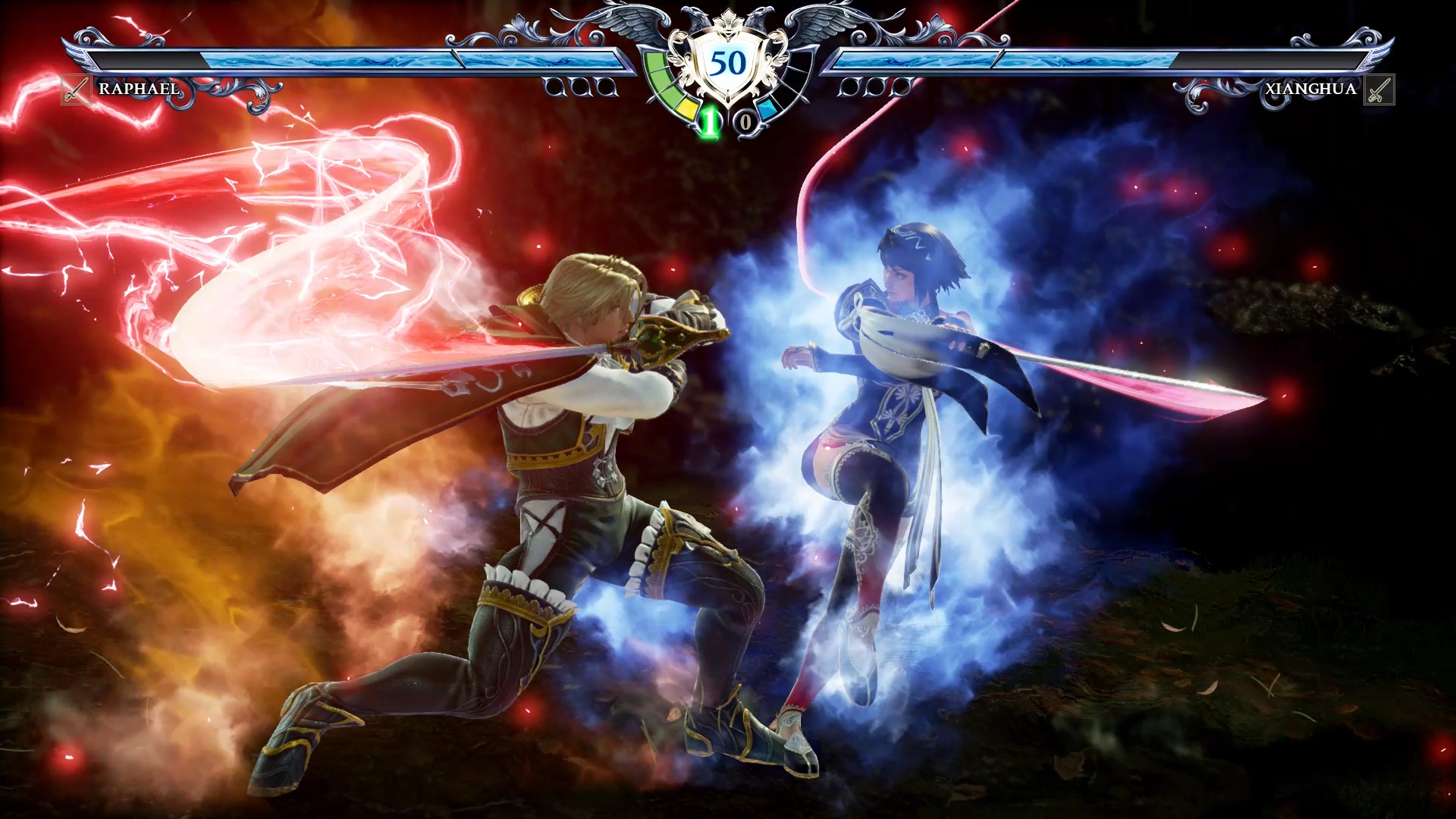
The three phases of the Reversal Edge. There can be a forth phase; however, it’s just another clash in case players tie the first time around. In the event of a second tie, the character who initiated the RE wins with a Lethal Hit.

| ||||||||||||||||||||
|
| ||||||||||||||||||||
